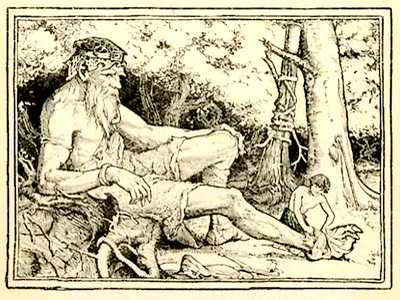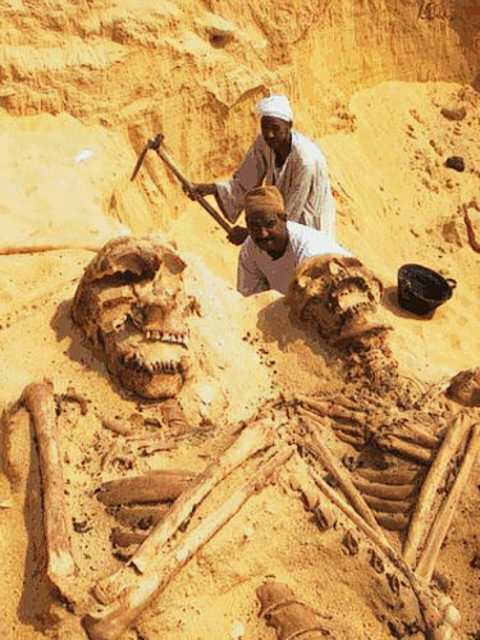Tracing the Footsteps of Giant Skeleton Discoveries Worldwide
The fascination with reports of “giant skeletons” from the mid-to-late 1800s has always intrigued me. Instances of human-like bone remains, often of colossal proportions, seemed to be a common occurrence during this period. Notable discoveries include an 1879 excavation in Brewersville, Indiana, revealing a nine-foot eight-inch skeleton in an Indian mound.
Similarly, George W. Hill, M.D., uncovered a skeleton “of unusual size” in Ashland County, Ohio, around the same time. In 1880, a report in the American Antiquarian detailed Doctor Everhart finding another large skeleton “of enormous dimensions” in a strange clay coffin near Zanesville, Ohio. The mysteries continued in 1881 when nine unusually large bodies were discovered in a cellar in Medina County, Ohio. Albert Harris, a resident, vividly described the size of the skeletons, adding an intriguing layer to the narrative.
While skepticism arises due to the prevalence of exaggerated stories, verified reports surfaced in a 1894 Smithsonian Institute report by Cyrus Thomas and Thomas Powell. The report documented discoveries, such as a large skeleton in Roane County, Tennessee, measuring 7 feet 3 inches. Another find occurred in Dunlieth, Illinois, with a Bureau of Ethnology agent uncovering a skeleton between 7 and 8 feet in length. These findings, reported by reputable institutions, lend credibility to the existence of large human skeletal remains.
The question arises: if such discoveries were once common, why aren’t similar findings more frequent in modern times? An email exchange with Brad Steiger, detailing reports of giant skeletons in private museums, adds another layer to the mystery. Interestingly, after including photos of these relics in lectures, Steiger faced requests to cease, coinciding with unexplained fires in the private museums. The censorship of such anomalous relics raises intriguing questions about what information might be intentionally concealed.
Further complicating the mystery, zoologist Ivan T. Sanderson’s inquiries in the 1960s revealed a peculiar letter about an engineer stationed on the Aleutian island of Shemya during World War II. The engineer unearthed sedimentary layers of giant human remains with skulls measuring up to 24 inches, allegedly retrieved by the Smithsonian. The lack of records about their destination raises suspicions of intentional concealment and prompts the question of whether institutions resist rewriting historical narratives.
While the idea of Men in Black spiriting away giant skeletons might be far-fetched, the metaphorical “skeletons in their closet” suggests there may be undisclosed aspects of our history waiting to be revealed.
Giants in folklore

Giants, formidable figures deeply embedded in folklore and mythology, have captivated the human imagination across cultures and centuries. In Greek mythology, the Gigantes, offspring of Gaia and Uranus, waged a legendary war against the Olympian gods, symbolizing the eternal struggle between order and chaos. These colossal beings permeate myths and legends globally, transcending cultural boundaries.
In British folklore, tales like “Jack the Giant Killer” showcase the triumph of the human spirit over enormous adversaries, contributing to the rich tapestry of giant lore. Norse mythology introduces Fafner, a dragon-guarding treasure, while Fasolt, a giant in Wagner’s Ring Cycle, epitomizes complex characters embodying both menace and tragedy. Italian folklore, too, boasts giants like Mata and Grifone, weaving tales of bravery and cunning against towering odds.
The biblical narrative introduces Goliath, a giant champion of the Philistines defeated by the young David, exemplifying the archetypal underdog prevailing against overwhelming strength. The Book of Enoch introduces the Watchers, fallen angels who cohabited with human women, giving rise to giant offspring known as Nephilim. These celestial beings transcend the earthly realm, adding a supernatural dimension to giant folklore. In Armenian folklore, Hayk, the patriarch and founder of the Armenian nation, engages in a fierce battle with the monstrous giant Bel, embodying the struggle for independence and identity.
Across the world in Basque mythology, the Basajaun, a mythical forest giant, emerges as a guardian of nature, offering a nuanced perspective where giants coexist harmoniously with the environment. These diverse cultural narratives collectively showcase giants as multifaceted entities, embodying both menace and virtue, reflecting the intricacies of the human experience. As folklore evolved, giants became symbolic figures, representing societal fears, natural forces, or the unknown.
In Armenian folklore, the ispolini, giant humanoid creatures living in the mountains, serve as both cautionary figures and protectors of nature. Their presence, intertwined with the rugged landscapes, contributes to the rich oral traditions of the region. Giants, whether portrayed as adversaries or allies, consistently play a crucial role in shaping cultural identities and values.
The enduring appeal of giants in folklore can also be seen in literary adaptations. From the fantastical realms of J.R.R. Tolkien’s Middle-earth, where Ents and mountainous creatures echo giant-like attributes, to the modern retellings of classic tales, giants persist as powerful symbols in storytelling. Contemporary media further explores the fascination with giants, from the towering titans in Japanese manga and anime to the colossal creatures in fantasy literature.
Beyond their role in folklore, giants remain embedded in the collective subconscious, prompting contemplation of the unknown, the limitless possibilities of the natural world, and the eternal struggle between the individual and the colossal forces that shape our existence. In an ever-evolving cultural landscape, giants endure as timeless symbols, inviting us to explore the boundaries of our imagination and confront the giants—both literal and metaphorical—that stand before us. Whether guardians of nature, embodiments of chaos, or reflections of our deepest fears, giants continue to stride through the corridors of human storytelling, leaving an indelible footprint on our cultural heritage.

